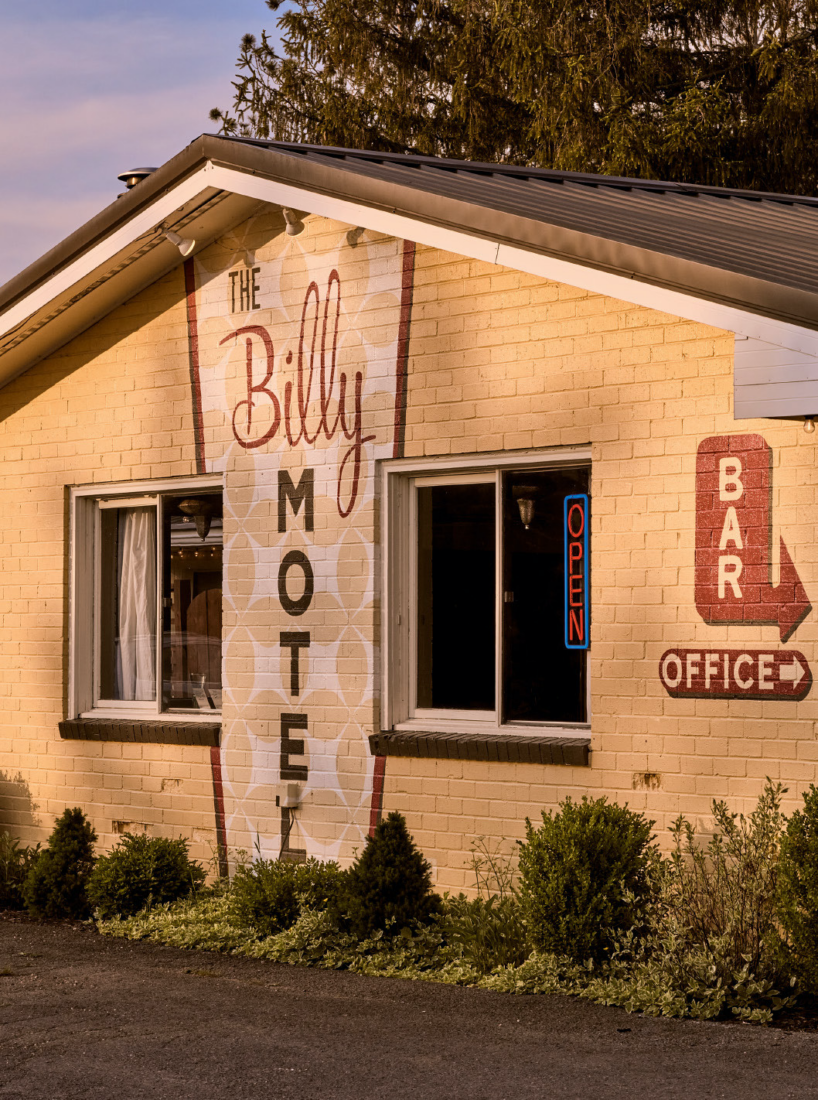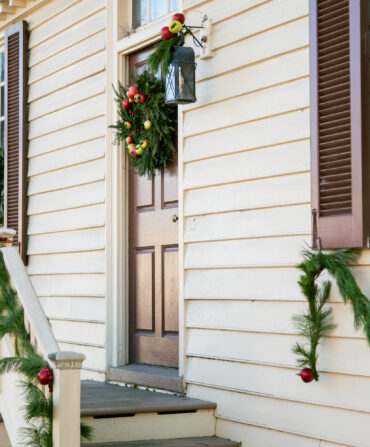On a snowy day in 1980, Chip Chase literally skied his way into a new life. He and a friend, Winslow Ayer, at the time two back-to-the-lander free spirits in their late twenties, were on a backcountry ski trip in the Allegheny Mountains of Tucker County, West Virginia, in search of a cabin on Cabin Mountain. Not having much luck (spoiler alert: there is no cabin on Cabin Mountain) and a little bit lost, they skied down the slope of the county’s highest peak, Weiss Knob, and came to a dead stop in front of an abandoned ski lodge.
“I said, I know exactly what this is—an old downhill ski area,” Chase, who’s now sixty-nine, tells me from his front porch near the base of that same mountain. “We saw the old towline, and there were even poles with pulleys and whatnot.” As they made their way back up the mountain, they took in a panoramic view of Canaan Valley, a unique ecosystem of forests, rivers, and wetlands in the highest mountain valley east of the Rockies, just south of the former timber and coal towns of Davis and Thomas. Shortly after, Ayer and Chase and Laurie Little (who’s now Chase’s wife) sought out the property’s owner, whose family had operated a downhill ski area there in the 1950s and ’60s and still maintain a cattle farm on the land. They set up a work-trade agreement, and what is now White Grass Ski Touring Center—a rare, and in my opinion the best, Nordic ski outfit below the Mason-Dixon Line—was born.

Nordic, or cross-country, skiing is not the stuff of elite downhill resorts and hefty vacation bills. Scandinavian in origin, cross-country skiing as a recreational pursuit really took hold in the United States in the 1970s among hippies and outdoor enthusiasts as a more affordable and accessible alternative to Alpine skiing. A season pass at White Grass costs less than a one-day lift ticket and rental at the downhill resort up the road. And if you have your own skis, poles, and boots, you can pretty much go wherever there’s snow—up hills, down hills, and everywhere in between. “In downhill skiing, what I liked the most was the snow on the trees, the view from the top of the mountains, the hush of the forest, the beauty of snow under your feet, and the feeling of freedom,” Chase says. “We have all that in spades with Nordic skiing.” Cross-country skiing can be as mild or rigorous as you make it, from a graceful, low-impact jaunt in the snow to a full-body cardio workout.
I learned to cross-country ski while growing up on the border of Indiana and Michigan. My parents, alternative types about the same age as Chase, also took up the sport in the seventies, and taught my brother and me when we were kids in the early nineties. Skiing was always a part of winter for me—and what made me love the season—but when I moved to North Carolina to study folklore in graduate school and then to Washington, D.C., I thought I’d have to leave my skis behind. Then I learned about White Grass. Over my moves to Charleston, West Virginia, to work as the state folklorist, and then to Kentucky, my partner’s home state, White Grass has remained my favorite winter destination.

Unlikely as cross-country skiing (which doesn’t make use of man-made snow) in the South seems, the Canaan Valley, and White Grass in particular, is actually perfectly positioned for it. North facing with a base elevation of 3,200 feet and located within a short and narrow snow belt, White Grass benefits from what Chase calls “lake-enhanced snow” off the Great Lakes, the southernmost of which starts about two hundred miles to the north. “Fifty miles east there’s a little town called Petersburg that averages about nineteen inches of snow a year,” he says. “We average 120 or 119.” Two downhill-skiing facilities, Canaan Valley Resort State Park and Timberline Mountain, also take advantage of the area’s ample snowfall.
Just a three-mile ski or hike east from White Grass lies the 17,000-acre Dolly Sods Wilderness, a high-altitude plateau of rocky outcroppings, vast meadows, and sphagnum bogs, with plants and wildlife like balsam fir and snowshoe hare at the southern limit of their range. West Virginia author Matthew Neill Null calls the area “a lost tundra, a sliver of Canada sixteen hundred miles below where it ought to be.” It offers plentiful skiing and hiking through fields and fir groves dotted with wild cranberries and blueberries.
In addition to Dolly Sods, the 130,000 acres of public lands in Tucker County also provide plenty of opportunities for skiing, hiking, backpacking, mountain biking, fishing, and paddling. Two miles south of Davis, Blackwater Falls State Park boasts “the longest sledding magic carpet on the East Coast”—a quarter-mile run with a conveyor belt that takes sledders back up the hill through a picturesque pine forest—as well as groomed Nordic ski trails and rentals. Of the park’s twenty miles of routes, my favorite is the short but rewarding Lindy Point Trail, which winds through thick rhododendron stands to a payoff view over Blackwater Canyon.

Still, the area is not frigid New England nor the high-altitude Rocky Mountains, and winters in the Canaan Valley tend to go through a continuous freeze-thaw cycle. As Chase likes to say, “If it snowed any more, none of us could afford to live here!” A collective embrace of ephemerality—a commitment to enjoying the fresh powder today because rain might wash it away tomorrow—is part of what makes White Grass special, but it’s also the care and thoughtfulness that Chase and his wife have put into the place that have kept it successful for more than four decades. The day lodge—the very same building Chase stumbled upon in 1980—houses the ski rental shop and the natural foods café that Little has run since White Grass opened. It’s heated by a wood-burning stove, and the whole place smells like homemade soup and baked goods.

Dotted across the thirty-one miles of maintained trails, marked with painted signs and bearing names like Gandalf’s Glade, Blackbird’s Wing, and Fern Gully, sit three-sided warming shelters, adorned with wind chimes and bird feeders, and stocked with granola bars and sunflower seeds. Some shelters have a wood-fired stove, and occasionally someone has left a jug of moonshine as a reward for those who’ve made an uphill climb through the snow-laden red spruces. Back in the woods, cups hang on hooks by the natural springs that run through the mountains so skiers can refill their water bottles. Inspired by Chase and Little’s generosity, and perhaps due to an awareness of the precarity of cross-country skiing in a Southern clime on a warming planet, regulars share in this reciprocity, leaving snacks for other skiers, or throwing another log in the stove before they ski down the mountain. Back in the lodge, Chase might pour you a cup of homemade eggnog or Chaga tea (he’s an avid mushroom forager) or recruit you and some strangers to do a shotski—a communal drink from shot glasses attached along the length of a cross-country ski. One evening, after a day of skiing, I was eating dinner by the fire when a group from the North Carolina coast showed up with a bag of fresh oysters they shucked and shared with everyone.
Even if you aren’t planning to ski, Davis and Thomas themselves offer charming mountain getaways. Over the last several years, they’ve attracted artists, writers, musicians, and outdoorsy types from across the region who have transformed the towns into funky creative havens. Two winters ago, having been on COVID lockdown for months, I took a much-needed weekend solo ski trip to the Canaan Valley, staying between the two towns at the recently updated midcentury Billy Motel, where William Eggleston prints hang in the bathrooms and copies of the late West Virginia writer Breece D’J Pancake’s collected stories sit on the nightstands. The motel’s ISH Kitchen serves fireside cocktails and internationally inspired dishes such as ramen noodle bowls and shredded beet and tahini salad in a low-lit lounge. On my most recent trip this fall, my favorite bite was a slow-cooked pork carnitas taco bowl with avocado salsa and pickled slaw from Picnic, a carry-out window across from the Thomas post office that recently expanded to include indoor seating.

TipTop café in Thomas, founded in 2012 by fifth-generation Tucker Countian Carrie Archuleta and her husband, Cade, is my go-to for coffee, tea, and a pre-ski pastry. “We want to provide a space in the community where people can feel comfortable no matter who they are,” Carrie says. Both tourists and locals turn out and stay awhile at their new location in an old storefront along the north fork of the Blackwater River, where they’ve beefed up their snack pantry with gourmet chips, vegan jerky, meats from the West Virginia butcher Farmer’s Daughter, tinned fish, and chocolates you can stow in your day pack for a trail picnic. They also stock bottles of wine, cider, and more than sixty West Virginia beers.


Next door, textile artist Nellie Rose sells her hand-painted raw-silk garments in a playful and bright shop and studio. Keep walking down the street, and you’ll hit Chase’s favorite spot, Purple Fiddle, a mostly acoustic music venue that has been the heart of the area’s nightlife for more than twenty years, hosting shows by local and international artists, such as the West Virginia native and rising Americana star Sierra Ferrell.

Since Chase, Little, and Ayer opened White Grass in 1981, the Canaan Valley has changed immensely. They are no longer the lone “granola crunchers” or “pine-cone eaters” they were teasingly called when they arrived—at the Snow Sports Museum of West Virginia in Davis, you can find Chase’s name on the Hall of Fame wall since his induction in 2020. There is some worry that a tourism boom could strain residents and the small budgets of town governments. Ever the optimist, though, Chase sees it as a mostly positive evolution. “Through the decades that we’ve been here, we’ve watched the area just bloom with art and music and culture,” he says. “It’s endless with what’s going on around here for a rural area.”
A trip to the Canaan Valley has become at least an annual event for me, an ideal meeting place for a weekend with friends who live in East Coast cities. Even if there’s no snow, we always find plenty to do. Sometimes that’s just a chilly hike up Bald Knob, with Chase and Little’s muddy dog, Betsy, tagging along, as we dream of a view at the top with the whole valley blanketed in fresh powder.








